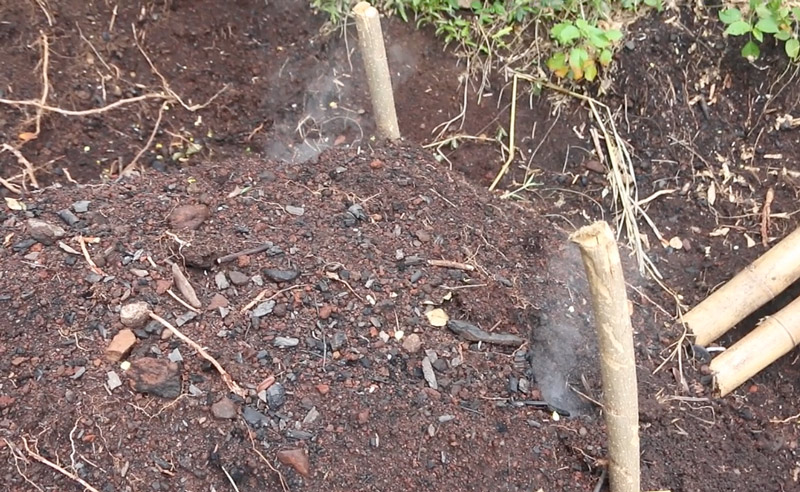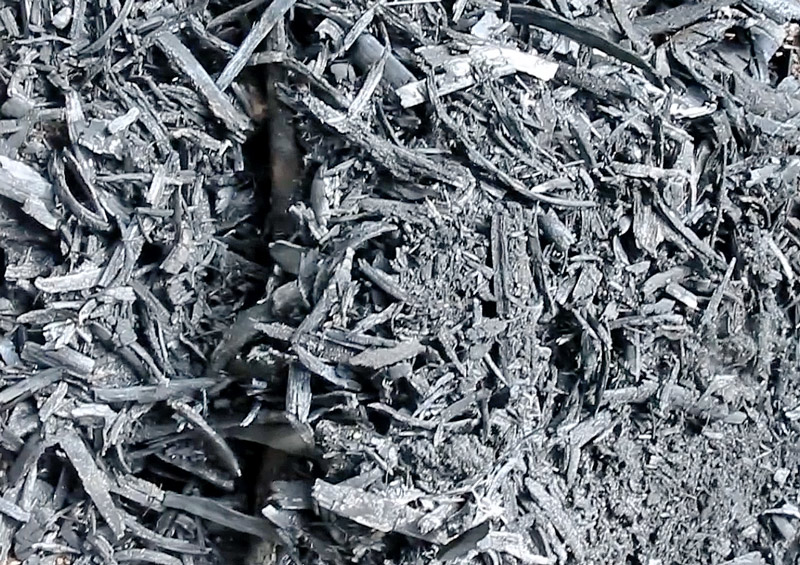
Yesterday I shared how I made potting soil. I also posted a video recently on how I used primitive charcoal making to create biochar I could add to the thick clay as nutrient bunkers.
When you want fast charcoal, it’s hard to beat a raging fire, but that’s not the way to get the most charcoal or the highest-quality coals.
In my neighborhood the local farmers make cooking charcoal like this:
That fire ended up burning for two weeks or so, then they harvested bags and bags of charcoal from inside of it.
This fellow uses a similar method I would love to try:
One of the preferred charcoal woods around here is Gliricidia sepium, but locals also use cinnamon, sea grape and even mahogany, though the latter is preferred for lumber instead of charcoal.
The finished charcoal is hard and rings with a high “clink” when struck. It’s beautiful stuff.
Almost any wood can be made into charcoal, but softer woods aren’t particularly good for cooking as they burn up too quickly in a fire. Instead, I use those for biochar.
Why Primitive Charcoal Making? Why Not Make Something Fancy?
If you have a biochar kiln you can convert everything to char, even weeds, but it’s hard to do that when you’re raking coals around.
Really, I’m totally low-tech in my gardening and homesteading. I even failed at tower gardening. I’ve learned my lesson. If it’s complicated and requires electricity, plumbing, welding, solar, etc. – I’m going to screw it up.
Instead of just telling you all how lousy I am with tech, I should probably spin it and brag about how “sustainable” I am. Or claim I’m “embracing the rich simplicity of the past.”
But no, I’m just good at breaking things. Heck, I barely even drove my new van and it broke.
Fortunately, I can make lots of charcoal by gathering branches and open burning, or digging it into the ground and covering for a slow burn that gets me a lot more higher quality charcoal.
I’m planning to grow hedges of Gliricidia for this kind of primitive charcoal production once I get a new homestead. That will be a ton of fun. I love chop-and-drop.
I want to do the same with Inga trees in an alley cropping system.


7 comments
Hi Dave, what’s it going to take to get the van running?
Any way to have a motor shipped down from the states?
The garage is trying to source a working engine right now – haven’t heard from them in a couple of weeks, but there’s a guy they say is looking. Not sure when that will come through but I have been taking the bus. God is good – my legs work – and I’m sure eventually we’ll get back on the road. I’m half thinking of buying another used vehicle and just selling this other one when it gets fixed, though that’s tough on the budget. We got a lemon for sure.
Your knack for breaking things, sounds like my husband. Never intentional, but it just seems to happen. ;) Thankfully, I appreciate low tech solutions anyway, because I hate complications with fixing things. However I must confess to being dependent on a few select items. Like a dishwasher.
That thing lets me spend all day in the garden, or working on construction projects, while also being able to cook from scratch, preserve and have the subsequent dishes dealt with in one eighth of the time it takes, to do it all by hand. Same with a washing machine and doing the laundry. I know we could do without these things, but I’m sure glad when we have them.
[…] also added homemade biochar to this compost pile to get it “charged” for future […]
[…] also added homemade biochar to this compost pile to get it “charged” for future […]
David… I thought fires went out if they did not get enough oxygen to maintain the burning, i.e., the oxidation process. How come these two don’t? I know there’s a good explanation that you’ll share with us :)
Good question. It’s because the heat continues the process of conversion: https://infogalactic.com/info/Pyrolysis
Comments are closed.